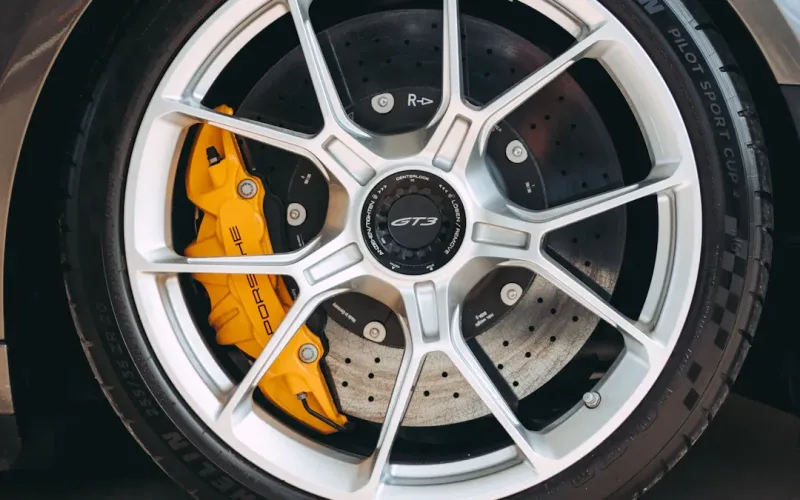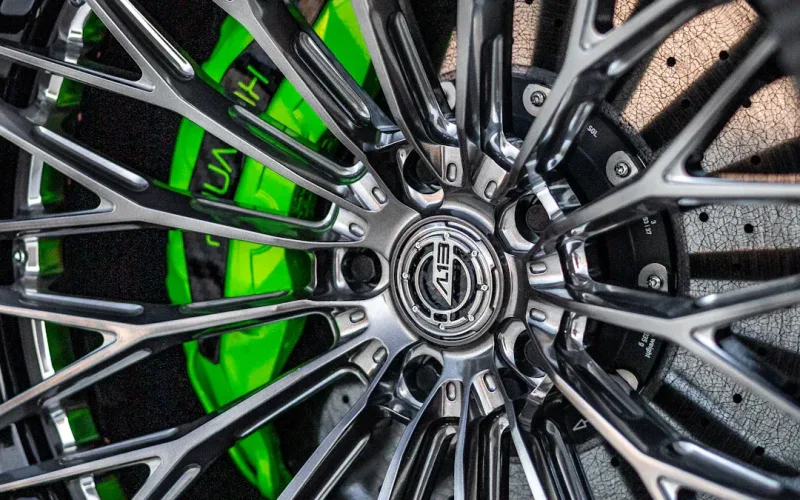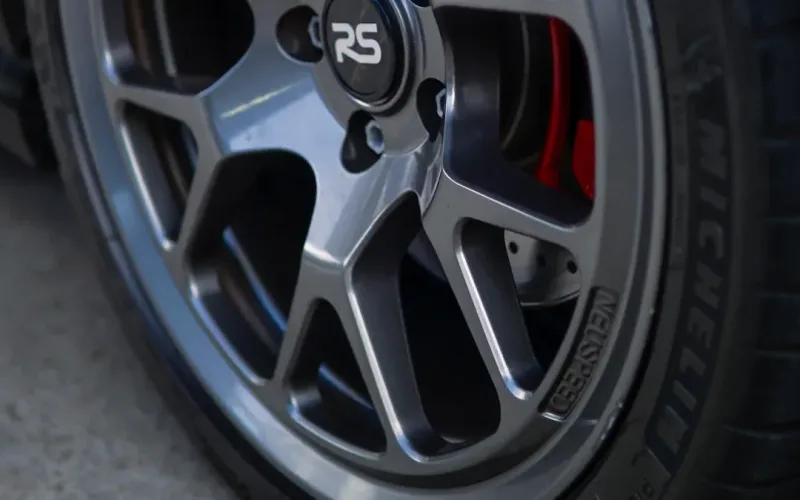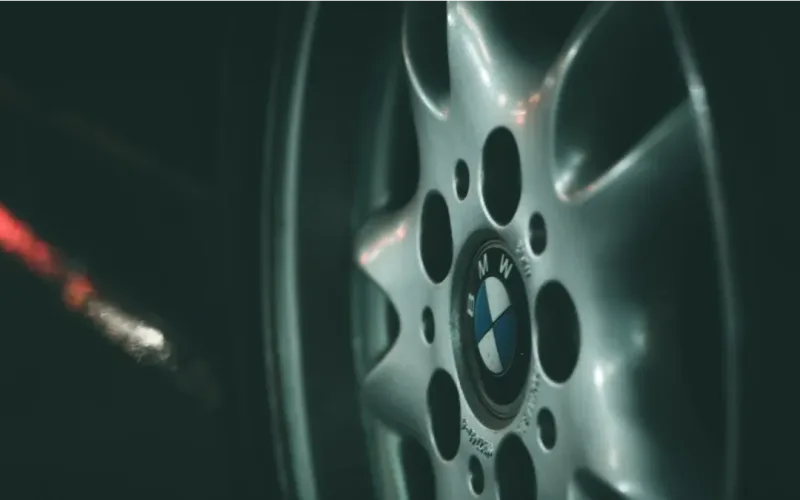Are Wheel Well Weights the Secret to Better Vehicle Handling


fortuneau
June 17, 2025
Wheel Weight Manufacturers Set New Standards for Performance
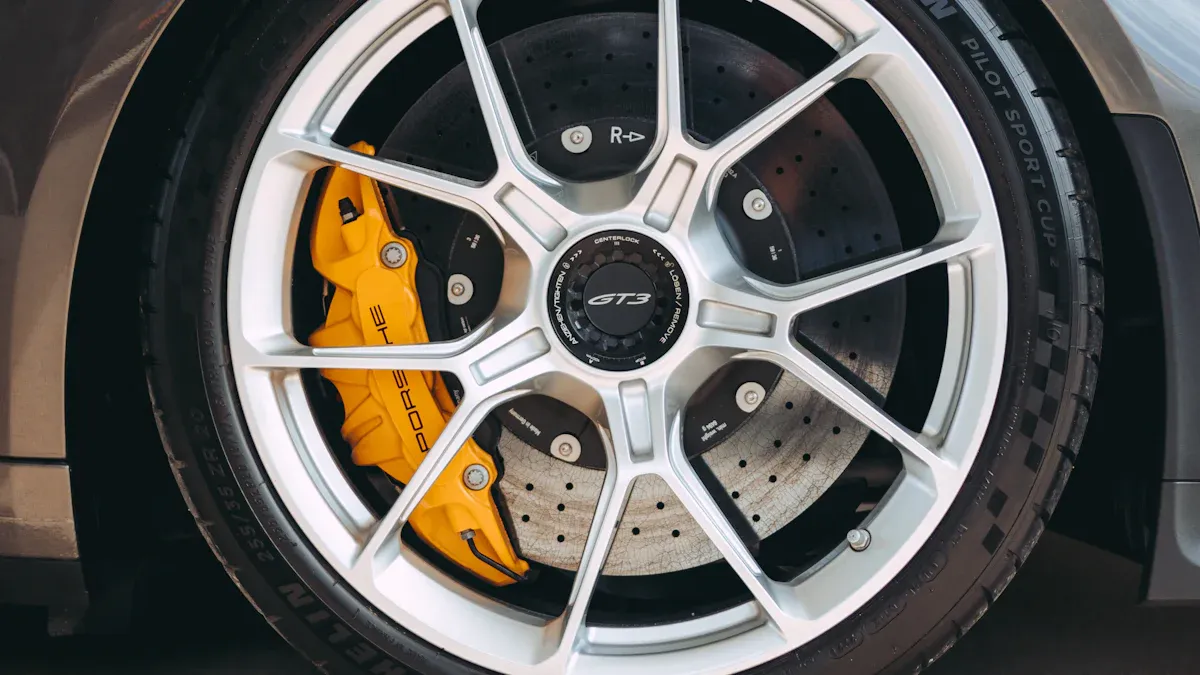
Wheel weight manufacturers now lead the industry with advanced materials and precision engineering. Their innovations in wheel weight technology have produced real gains in both safety and sustainability. For example, aluminum wheels can save up to 126 pounds across 18 wheels compared to steel, while predictive maintenance algorithms have cut vehicle breakdowns by 20%. These measurable improvements benefit automotive professionals and consumers, showing how manufacturers continue to set higher standards for wheel performance and reliability.
Evolution of Wheel Weight Technology
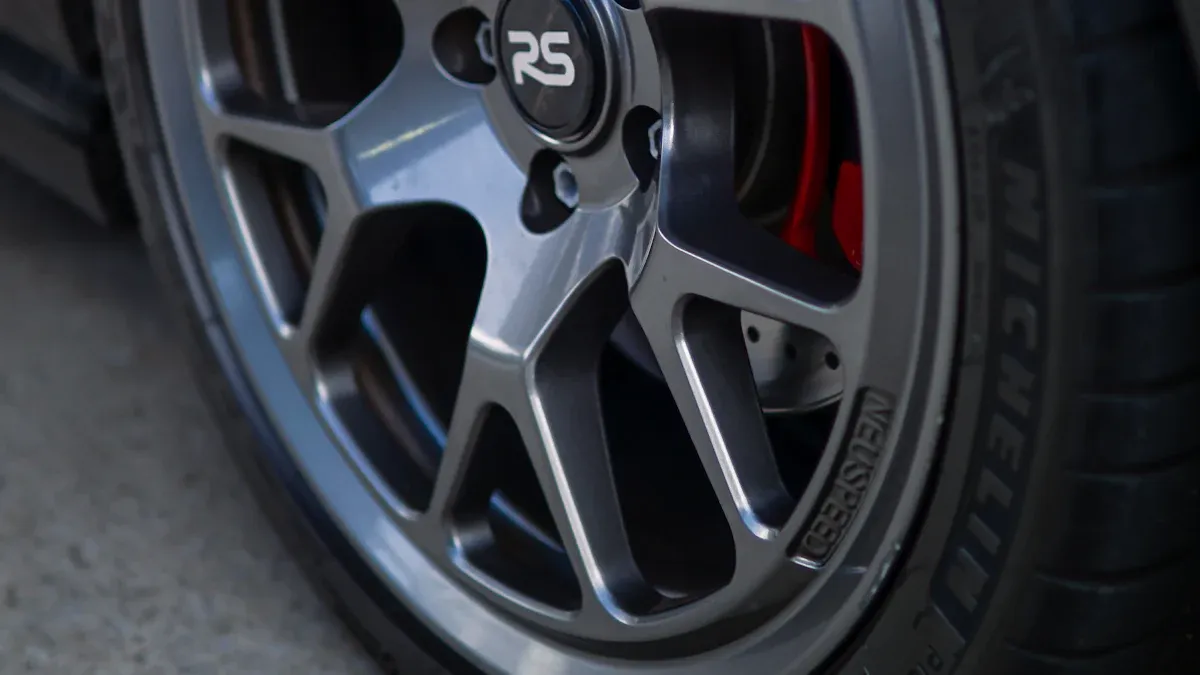
Transition from Lead to Modern Materials
Wheel weight technology has changed dramatically over time. Early vehicles used wood and steel, but manufacturers soon adopted stronger and lighter materials. The table below shows how materials evolved in automotive wheels and wheel weights:
| Time Period | Materials Introduced | Relevance to Wheel Weight Technology |
|---|---|---|
| Early 20th Century | Wood and steel | Improved strength and durability |
| 1930s-1950s | All-steel bodies | Enhanced crash resistance and mass production |
| Post-War Period | Aluminum and plastics | Aluminum reduced wheel weight |
| 1970s-1980s | Lightweight materials (aluminum, high-strength plastics) | Focus on fuel efficiency and lighter wheels |
| 1990s-2000s | High-strength steel, magnesium, titanium | Used for performance and lightness |
| Modern Era | Aluminum, magnesium, titanium, carbon fiber | High strength-to-weight ratio, better performance |
The shift from lead to non-lead options marks a major milestone. Lead content in wheel weights dropped from over 90% to about 0.1%. Automakers representing 95% of new light-duty vehicles in the U.S. now use non-lead alternatives. Industry initiatives, such as the National Lead-Free Wheel Weight Initiative, helped remove nearly all lead from new vehicles. Manufacturers now offer zinc, steel, and composite weights as the main non-lead options. These materials provide a reliable alternative for lead weights and meet strict environmental regulations.
Regulatory Impact and Industry Adaptation
Environmental regulations have driven the adoption of non-lead wheel weights worldwide. The table below highlights key regulations and their effects:
| Region | Regulation | Effective Date | Core Requirements | Permitted Materials | Penalties |
|---|---|---|---|---|---|
| EU | ELV Directive | 2003/2013 (revised) | Ban on lead in auto parts | Zinc, steel, composites | Recalls and fines |
| USA | EPA Lead Restrictions | State-by-state bans | 15 states ban lead wheel weights | Primarily zinc | Sales bans |
| China | GB Standards | 2018 (updated) | Encourages lead-free transition | Lead allowed during transition | Tax adjustments |
| Japan | JIS D4205 | 2015 | Automaker supply chain requirements | Zinc, steel | Market restrictions |
Manufacturers responded by increasing zinc demand and investing in R&D for composites. Upstream suppliers shifted from lead casting to zinc stamping. Downstream, original equipment manufacturers now require 100% non-lead weights. These trends show a clear movement toward non-lead solutions. The industry continues to innovate, ensuring that non-lead wheel weights remain effective and compatible with modern wheel designs.
Innovations by Leading Wheel Weight Manufacturers
Advanced Materials: Steel, Zinc, and Composites
Wheel weight manufacturers have made significant advancements by adopting new materials. Steel remains a popular choice because it offers strength and cost-effectiveness. According to Stanford Advanced Materials, steel provides a reliable option for many automotive parts, including wheel components. It helps keep costs down while maintaining durability.
Zinc has become another important material. It replaces lead in many applications due to its safety and environmental benefits. Manufacturers use zinc for its corrosion resistance and ability to form precise shapes. Composites represent the latest step in material innovation. A case study from the University of Tennessee shows that Ford replaced a 90-piece steel front structure with a 2-piece resin transferred composite structure. This change led to a 34% reduction in weight and improved both stiffness and strength. These results highlight how composites can make vehicles lighter and stronger at the same time.
A review on ScienceDirect explains that lightweight materials such as high-strength steel and composites improve vehicle performance, fuel economy, and recyclability. These materials help reduce the overall weight of the wheel while keeping it strong and durable. Manufacturers now use advanced testing methods to ensure these materials meet strict standards. Some of these tests include rheology, differential scanning calorimetry, and dynamic mechanical analysis. These tests check how materials behave under stress, heat, and other conditions, making sure they last a long time.
High-Performance Adhesive and Application Systems
Adhesive wheel weights have changed the way manufacturers balance wheels. High-performance adhesives now play a key role in this process. These adhesives must pass several tests to prove their strength and durability. The table below shows some of the main tests used:
| Test Name | Purpose |
|---|---|
| Floating Roller Peel Test | Assesses initial bond strength and quality under different loading modes |
| Wet Peel Testing | Measures bond durability in humid conditions |
| Bond Line Corrosion Resistance | Tests resistance to salt spray and environmental durability |
| Lap Shear Testing | Evaluates adhesive strength in various environments |
These tests show that high-performance adhesives can handle tough conditions like heat, humidity, and salt. Advanced adhesives, such as nanosilica-filled types, offer even more benefits. They provide superior fracture toughness, thermal stability, and abrasion resistance. These adhesives cure quickly under UV or LED light and work well in temperatures from -80°F to +350°F. Some have passed 1,000 hours of testing at high heat and humidity, showing minimal wear. This level of performance ensures that adhesive wheel weights stay in place and keep wheels balanced for a long time.
High-performance adhesives also help prevent uneven tire wear. They extend tire life by up to 20% and improve driving stability. Balanced wheels reduce vibrations and protect suspension and steering parts. This technology not only improves safety but also helps drivers save money on maintenance.
Automation and Precision Engineering
Manufacturers have embraced automation and precision engineering to improve wheel weight production. They use advanced sensors, vision systems, and feedback loops in spinning machines. These systems monitor quality in real time and ensure each wheel weight meets exact standards. CNC-based and multi-axis spinning machines allow for complex shapes and high repeatability with little manual work.
Industry 4.0 technologies, such as IoT connectivity and embedded control systems, support predictive maintenance and process optimization. For example, Aero Race Wheels Inc. uses CNC controls with automated program generation and real-time monitoring. This setup reduces changeover times and improves product quality.
Manufacturers now develop smart weights with sensors and diagnostic features. These smart weights help service centers maintain wheels more efficiently. Digital integration allows for better diagnostics and data-driven maintenance. The shift toward lead-free materials, such as zinc and steel, also reflects a commitment to sustainability and precision engineering.
Automation has improved accuracy and efficiency in wheel weight production. It reduces the risk of human error and ensures that each product meets strict quality standards. The demand for advanced, eco-friendly, and precise solutions continues to drive innovation in the industry.
Environmental Responsibility in Wheel Weight Technology

Eliminating Lead and Meeting Global Standards
Manufacturers in the wheel weight industry have taken strong steps to remove lead from their products. Lead once served as a common material for wheel balancing weights, but it poses serious environmental hazards. Many governments now enforce strict rules to protect people and the environment. These rules make it necessary for companies to use non-lead materials.
- The EU RoHS Directive and US EPA rules ban or phase out lead-based wheel weights.
- Global regulatory trends push for the elimination of lead in manufacturing.
- Mandates in the EU and North America create steady demand for non-lead wheel weights.
- Companies now use steel, zinc, and composite alloys as non-lead options.
The lead-free movement has changed the industry. Manufacturers must comply with these regulations to meet safety and performance standards. Rising raw material costs and environmental rules encourage the shift to non-lead alternatives. This global effort ensures that wheel weights are safer for people and the planet.
Sustainable Manufacturing and Quality Assurance
Wheel weight manufacturers now focus on sustainability throughout their operations. They track and improve their environmental, social, and governance (ESG) performance. Companies use several metrics and audits to measure their progress:
- Energy consumption audits and greenhouse gas (GHG) accounting
- Water usage monitoring and waste management tracking
- Labor practices and employee well-being surveys
- Supply chain labor standards audits and community engagement
- Board diversity and anti-corruption policies
Manufacturers also use advanced quality assurance methods. Life Cycle Assessment (LCA) helps them understand the environmental impact of products from start to finish. Embodied carbon assessments during design reviews help reduce CO2 emissions. Digital twins and non-destructive testing (NDT) improve resource efficiency and reduce waste. ESG auditing services, such as QIMA, validate sustainability efforts and ensure transparency.
These practices help companies maintain high standards. They also support continuous improvement in sustainable manufacturing. By focusing on non-lead materials and responsible production, manufacturers set a strong example for the industry.
Overcoming Challenges in Wheel Weight Manufacturing
Balancing Cost, Performance, and Environmental Goals
Wheel weight manufacturers face a complex challenge. They must balance cost, performance, and environmental targets in every product. Each material—steel, zinc, lead, and composites—offers unique trade-offs. Steel stands out for its durability, recyclability, and cost-effectiveness, especially in regions with strict environmental rules. Zinc provides strong corrosion resistance and is non-toxic, making it popular in Europe. Composite and advanced alloys are gaining attention for their performance and sustainability benefits.
- Steel: Durable, recyclable, cost-effective
- Zinc: Corrosion-resistant, non-toxic
- Composites: Lightweight, high-performance, sustainable
Market studies show that vehicle type influences the choice of wheel weights. Sedans, SUVs, and luxury cars each require different solutions to balance cost and performance. The global market continues to shift toward sustainable materials, driven by regulations and consumer demand. Manufacturers also consider the impact of raw material price changes and supply chain disruptions. They must weigh economic costs against public health and environmental benefits, especially when phasing out lead-based products. This careful analysis ensures that every tire and wheel assembly meets both safety and sustainability standards.
Ensuring Compatibility with Modern Wheel Designs
Modern wheel designs demand advanced solutions for weight systems. Manufacturers conduct technical evaluations to ensure compatibility with new materials and shapes. They test rim depth, weight distribution, lateral stiffness, and compliance. The location of mass on the rim affects acceleration and overall performance. Material choices, such as carbon or aluminum, influence stiffness and durability.
Clip-style wheel weights remain essential for many applications. Engineers assess how these weights fit with different rim profiles and tire types. Tubular rims, for example, allow lighter construction and require precise weight placement. Bearing quality and hub design also play a role in rolling efficiency and mechanical friction. Manufacturers use both laboratory and real-world tests to validate stiffness, compliance, and rolling resistance. These steps guarantee that clip-style wheel weights and adhesive options work with the latest wheel and tire technologies. By focusing on compatibility, manufacturers help ensure a smooth ride and long-lasting performance.
Impact on Consumers and the Automotive Industry
Enhanced Safety and Reliability
Modern wheel weight manufacturers deliver significant safety improvements for drivers. Advanced technology ensures that each tire remains balanced, which reduces the risk of uneven wear and blowouts. According to the National Highway Traffic Safety Administration, properly balanced tires can decrease the chance of accidents caused by vibration or loss of control. Manufacturers use strict quality checks to guarantee that every wheel weight meets high standards. These checks include real-time monitoring and automated inspections. As a result, vehicles experience fewer vibrations and better handling on the road.
Note: Balanced tires help protect suspension systems and steering components, leading to safer driving experiences for everyone.
Many automotive professionals report that new wheel weight designs improve reliability. These products withstand harsh weather, road salt, and heavy loads. Drivers notice fewer issues with tire pressure and alignment. This reliability builds trust between consumers and the automotive industry.
Long-Term Value and Maintenance Advantages
Innovations in wheel weight manufacturing offer long-term value for vehicle owners. High-quality weights extend tire life by preventing uneven tread wear. Studies from the Rubber Manufacturers Association show that balanced tires can last up to 20% longer than unbalanced ones. This extension saves money on replacements and reduces waste.
- Longer tire lifespan lowers maintenance costs.
- Fewer repairs mean less time spent at service centers.
- Improved fuel efficiency results from reduced rolling resistance.
Automotive shops also benefit from easier installation and removal of modern wheel weights. Advanced adhesives and clip systems speed up service times. This efficiency allows technicians to serve more customers each day. Consumers enjoy smoother rides and lower ownership costs over the life of their vehicles.
Wheel weight manufacturers continue to set new standards for performance by adopting advanced materials and sustainable practices. The global market is expected to reach $1.6 billion by 2032, driven by rising demand for lightweight and eco-friendly solutions. Advancements in testing, such as T-test analysis, have improved product reliability and safety. These changes benefit both consumers and the automotive industry by delivering safer, longer-lasting, and more sustainable vehicles.
FAQ
What materials do leading wheel weight manufacturers use today?
Manufacturers now use steel, zinc, and advanced composites. These materials offer strength, corrosion resistance, and environmental safety. Steel and zinc have replaced lead in most markets. Composites provide lightweight options for high-performance vehicles.
How do wheel weight manufacturers ensure product quality?
Manufacturers use automated inspections, real-time monitoring, and strict quality control tests. Each product undergoes checks for durability, fit, and corrosion resistance. Certified facilities, such as those with ISO9001, guarantee consistent quality for every shipment.
Why is lead no longer used in wheel weights?
Lead poses health and environmental risks. Regulations in the United States, Europe, and Asia restrict or ban its use. Manufacturers now choose non-lead materials to meet global safety standards and protect the environment.
Are modern wheel weights compatible with all wheel designs?
Most modern wheel weights fit a wide range of wheel types, including aluminum and steel rims. Engineers test products for compatibility with new wheel shapes and sizes. Both clip-on and adhesive weights work with today’s automotive wheels.


